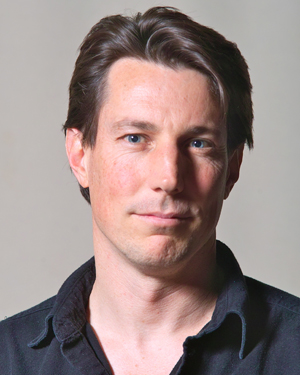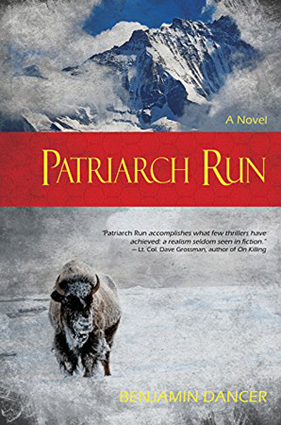Is Jack The Good Guy or the Bad Guy? by Benjamin Dancer
 Is Jack The Good Guy or the Bad Guy?
Is Jack The Good Guy or the Bad Guy?
Readers of Patriarch Run tend to struggle with Jack. It’s hard to know what to make of him. Is he the good guy or the bad guy? Intelligent people can disagree on the answer to that question.
I’m writing this post as a bit of a thought experiment. Think of it as a piece to provide some conversation about the strong feelings Jack evokes, which means that there are plenty of spoilers below.
Because Jack is motivated by the consequences of population, let’s start the conversation there.
Any population that is growing will eventually double. That is a mathematical fact. A population that perpetually grows will eventually become too large to be sustainable. I think we can all agree on that without deciding on a precise tipping point.
Jack made a calculus in the novel regarding the fate of the human species. He examined what he knew of our innate biological and psychological drives and calculated that the probability of the species voluntarily reducing its own growth rate to zero (or less) was lower than the probability of zero growth being forced upon the species. That zero growth event would be an overpopulation-induced apocalypse resulting in billions of deaths.
From Jack’s point of view, precipitating an apocalypse that would kill about 7 billion people was a better alternative than allowing many more people (10, 24 or 30 billion, depending on the actual tipping point), to die in an overpopulation-induced apocalypse. As an aside, the population was about 6.884 billion in 2010, the time of the narrative, and Jack probably assumed a few million of us would survive in the world he created.
The moral calculus presented here might remind the reader of a classic ethical dilemma known as the trolley problem. Sarah Bakewell described the problem in the New York Times like this: You are walking near a trolley-car track when you notice five people tied to it in a row. The next instant, you see a trolley hurtling toward them, out of control. A signal lever is within your reach; if you pull it, you can divert the runaway trolley down a side track, saving the five — but killing another person, who is tied to that spur.
Which is the correct choice? In surveys, most people, 90%, opt to pull the lever, choosing one death instead of five. In other words, 90% of us calculate the morality of the situation like Jack.
 To make the question more interesting philosopher Judith Jarvis Thomson presented The Fat Man version: As before, a trolley is hurtling down a track toward five people. You are on a bridge under which it will pass, and you can stop it by dropping a heavy weight in front of it. As it happens, there is a very fat man next to you–your only way to stop the trolley is to push him over the bridge and onto the track, killing him to save five. Should you proceed?
To make the question more interesting philosopher Judith Jarvis Thomson presented The Fat Man version: As before, a trolley is hurtling down a track toward five people. You are on a bridge under which it will pass, and you can stop it by dropping a heavy weight in front of it. As it happens, there is a very fat man next to you–your only way to stop the trolley is to push him over the bridge and onto the track, killing him to save five. Should you proceed?
Although most people are willing to pull the lever in survey questions, very few can see themselves pushing the fat man. The number of lives at stake are the same in both scenarios, so why do people feel more comfortable pulling the lever than pushing the man?
Jack is clearly in the minority now; he would have pushed.
This thought experiment is a useful tool in examining our morality. Ethicists tend to boil the dilemma down to this: we can act on a rational and utilitarian calculus, intentionally killing one to save five; or we can respect the subrational instinct that makes us recoil at the thought of pushing a man to his death, choosing not to act, thus allowing the avoidable death of the five.
Patriarch Run can be viewed as a fleshed out version of the trolley problem. The story assumes a scenario in which the exponential growth of the human population threatens the extinction of the species. One man, Jack Erikson, has an opportunity to stop the unfolding ecological crisis, but to do so he must sacrifice even his own family. Depending on how you choose to solve the trolley problem, Jack is either the villain or the protagonist of the narrative.













We are not over populated, there is vast land that is unpopulated, there are lots of other options, we rely upon ranchers and farmers to breed and grow crops. Our problems are what the government does to the water supply. Whenever someone starts focussing on population control, you have to ask a question; what cult are they in? As we speak, the Rothschilds and Billderbergs hold seminars supporting mass murder, aka, population control.
Thank you so much Christina for being engaged. I bet liberty would do more to solve the population problem than control. I’d invite you to check this out: http://www.benjamindancer.com/sustainability When you understand the math, you’ll realize the free space you see is less than the whole picture. Imagine if every human being was afforded the right to their own body. That would also mean every woman would be afforded her right to her own reproductive choices. Such liberty I imagine would solve the population issue, as on average women would choose to have about one or two kids, with plenty of healthy exceptions. Please watch the video on exponential growth to understand the math. I’m so glad you engaged the issue, Christina!